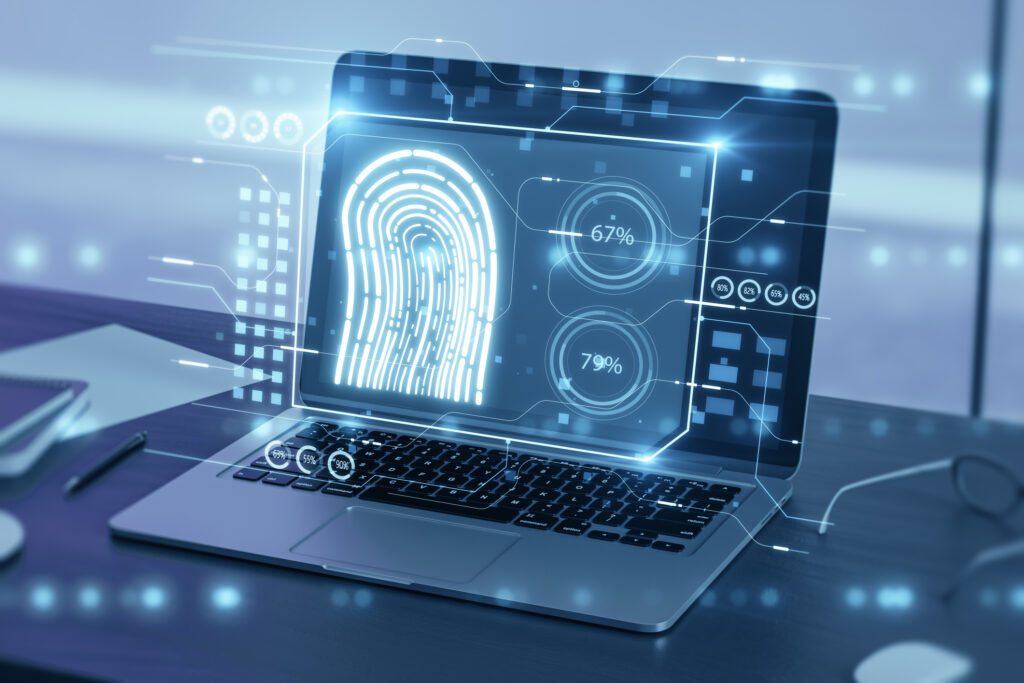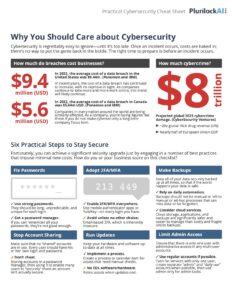In the ever-evolving landscape of cybersecurity, the importance of robust authentication methods cannot be overstated. Traditional approaches relying on passwords and PINs are increasingly vulnerable to various cyber threats. Biometric authentication has emerged as a powerful and secure alternative, leveraging unique physical and behavioral characteristics for identity verification. This deep dive explores the fundamental concepts of biometric authentication, elucidates its significance in cybersecurity, and provides in-depth analysis on why it matters in the digital realm.
Understanding Biometric Authentication
Biometric authentication is a process that utilizes distinct physiological or behavioral characteristics to identify and verify individuals. These characteristics can include fingerprints, iris patterns, facial features, voice tones, and even behavioral traits like typing patterns. Unlike traditional authentication methods that rely on something the user knows (e.g., passwords), biometrics relies on something the user is, making it inherently more secure.
Types of Biometric Authentication
- Fingerprint Recognition: This method involves capturing and analyzing the unique patterns of ridges and valleys on an individual’s fingertip. Fingerprint recognition is widely used due to its reliability and ease of implementation.
- Iris Recognition: Iris patterns are unique to each individual and can be captured using specialized cameras. Iris recognition systems create templates for comparison, providing a high level of accuracy.
- Facial Recognition: Facial recognition technology identifies individuals by analyzing unique facial features such as the distance between eyes, nose shape, and jawline. It has applications in both physical and digital security.
- Voice Recognition: This method relies on the distinct characteristics of an individual’s voice, including pitch, tone, and speech patterns. Voice recognition is often used for secure access to systems and devices.
- Behavioral Biometrics: This category includes traits like keystroke dynamics, gait analysis, and signature dynamics. Behavioral biometrics focus on patterns in an individual’s behavior, adding an extra layer of security.
Why Biometric Authentication Matters
Enhanced Security
One of the primary reasons biometric authentication matters in cybersecurity is its capacity to provide enhanced security. Traditional authentication methods, especially those relying on passwords, are susceptible to various cyber threats, including phishing attacks, brute force attempts, and credential theft. Biometric authentication, based on unique physiological or behavioral traits, significantly reduces the risk of unauthorized access.
Mitigation of Password-related Risks
Passwords continue to be a weak link in the cybersecurity chain. Users often choose weak passwords, reuse them across multiple accounts, or fall victim to phishing schemes. Biometric authentication mitigates these risks by eliminating the reliance on passwords altogether. This not only reduces the attack surface but also eliminates the potential for password-related breaches.
User Convenience and Experience
Biometric authentication enhances user experience by providing a seamless and convenient way to verify identity. Users are spared from the burden of remembering complex passwords or dealing with frequent password resets. The natural and intuitive nature of biometric authentication contributes to a more user-friendly interaction with digital systems.
Prevention of Impersonation
Biometric traits are inherently tied to an individual and are challenging to forge or replicate. This makes biometric authentication an effective deterrent against impersonation attempts. In scenarios where high levels of security are crucial, such as access to sensitive data or secure facilities, biometrics offer a reliable means of ensuring that the person attempting access is indeed who they claim to be.
Compliance with Regulatory Standards
The increasing emphasis on data privacy and protection has led to the introduction of stringent regulatory standards globally. Biometric authentication aids organizations in complying with these standards, such as the General Data Protection Regulation (GDPR) in Europe and the Health Insurance Portability and Accountability Act (HIPAA) in the United States. By incorporating biometric measures, organizations can enhance their data security posture and meet regulatory requirements.
In-depth Analysis of Biometric Authentication
Secure Storage and Encryption
The secure storage and encryption of biometric data are critical aspects of biometric authentication. Unlike passwords that can be easily hashed, biometric data cannot be transformed into irreversible codes due to the need for future comparisons. Therefore, the storage and transmission of biometric data require robust encryption protocols to prevent unauthorized access.
Biometric systems often use templates generated from the original biometric data for comparison. These templates are securely stored, and the actual biometric data is either discarded or stored in highly encrypted form. However, the challenge lies in ensuring that even if the templates are compromised, they cannot be reverse-engineered to recreate the original biometric data.
Spoofing and Presentation Attacks
While biometric authentication provides a high level of security, it is not immune to attacks. Spoofing, also known as presentation attacks, involves using replicas or manipulated biometric traits to deceive the system. For example, facial recognition systems can be fooled with high-quality photographs or 3D-printed face masks, and fingerprint scanners may be vulnerable to lifted prints.
To counteract these attacks, advanced biometric systems incorporate liveness detection mechanisms. These mechanisms assess the vitality of the presented biometric traits, ensuring that they belong to a living and present individual. Additionally, multi-modal biometrics, which combine multiple biometric methods, can enhance security by making it more challenging for attackers to bypass the system using a single spoofed trait.
Ethical and Privacy Considerations
The collection and use of biometric data raise ethical and privacy concerns. Individuals may be hesitant to share such personal information, fearing potential misuse or unauthorized access. Organizations deploying biometric systems must establish transparent policies regarding data collection, storage, and usage, assuring users that their biometric information will be handled responsibly and ethically.
Regulatory frameworks, such as GDPR, underscore the importance of informed consent and provide individuals with the right to control their personal data. Organizations must navigate these regulations with care, implementing robust privacy measures to build trust among users and ensuring the ethical use of biometrics in cybersecurity.
Integration with Multi-Factor Authentication
While biometrics offer a strong authentication factor on their own, combining them with other authentication methods in a multi-factor authentication (MFA) approach further strengthens security. MFA involves the use of two or more authentication factors: something the user knows (password), something the user has (token or smart card), and something the user is (biometric trait).
By integrating biometrics into MFA, organizations create a layered security approach that significantly reduces the risk of unauthorized access. Even if one factor is compromised, the additional layers provide an extra barrier, making it more challenging for attackers to breach the system.
Continuous Monitoring and Adaptive Authentication
Traditional authentication methods grant access until the user logs out or the session times out. Biometric systems can introduce continuous monitoring and adaptive authentication. Continuous monitoring involves consistently verifying the user’s identity throughout the session, especially in critical operations or sensitive transactions.
Adaptive authentication takes into account the user’s behavior and dynamically adjusts authentication requirements based on risk levels. For example, if a user typically accesses the system from a specific location and suddenly attempts to log in from a different geographical location, the system may trigger additional authentication steps to ensure the legitimacy of the access attempt.
Future Trends and Innovations
The field of biometric authentication is dynamic, with ongoing research and innovations aimed at addressing existing challenges and enhancing system capabilities. Some notable trends and future developments include:
- Biometric Fusion: Combining multiple biometric traits (multi-modal biometrics) for more robust and accurate identification.
- AI and Machine Learning Integration: Utilizing artificial intelligence (AI) and machine learning (ML) algorithms to improve the accuracy and efficiency of biometric systems, especially in recognizing complex behavioral traits.
- Blockchain for Biometric Data Security: Exploring the use of blockchain technology to enhance the security and integrity of biometric data storage and transmission.
- Biometric Cryptography: Investigating cryptographic techniques that allow the secure handling of biometric data without compromising privacy.
- Standardization and Interoperability: Establishing industry standards and ensuring interoperability among different biometric systems to facilitate widespread adoption and integration.
Conclusion
Biometric authentication represents a paradigm shift in the realm of cybersecurity, offering a more secure and user-friendly alternative to traditional methods. Its significance lies in its ability to enhance security, mitigate password-related risks, and provide a convenient and seamless user experience. However, the deployment of biometric systems requires careful consideration of ethical, privacy, and security concerns.
As technology continues to advance, biometric authentication will likely play an increasingly crucial role in securing digital assets. Continuous research and innovation will address current challenges and pave the way for more secure, user-friendly, and privacy-conscious biometric solutions. Organizations must remain vigilant in adopting best practices, complying with regulations, and staying informed about emerging trends to harness the full potential of biometric authentication in the evolving landscape of cybersecurity.






